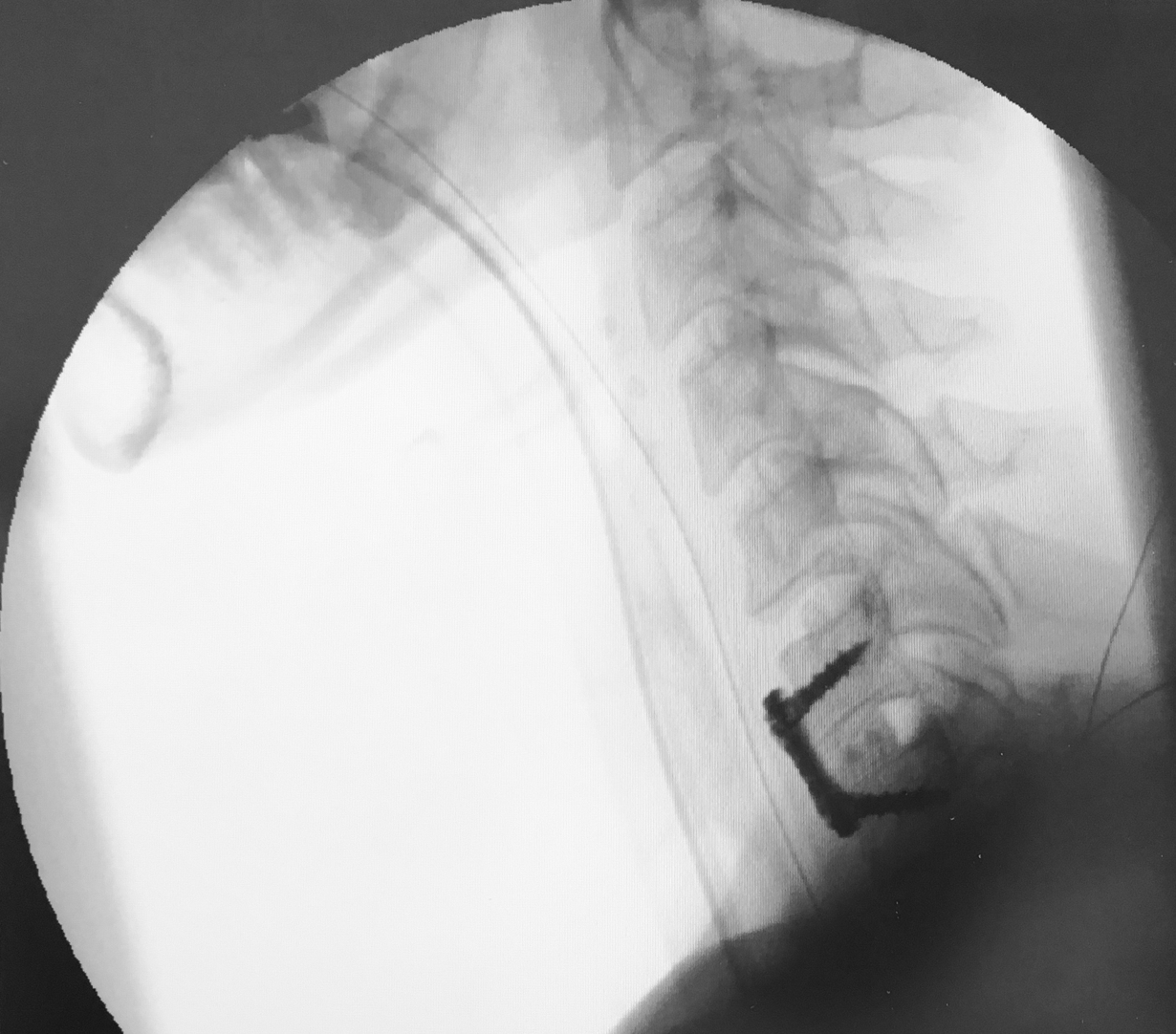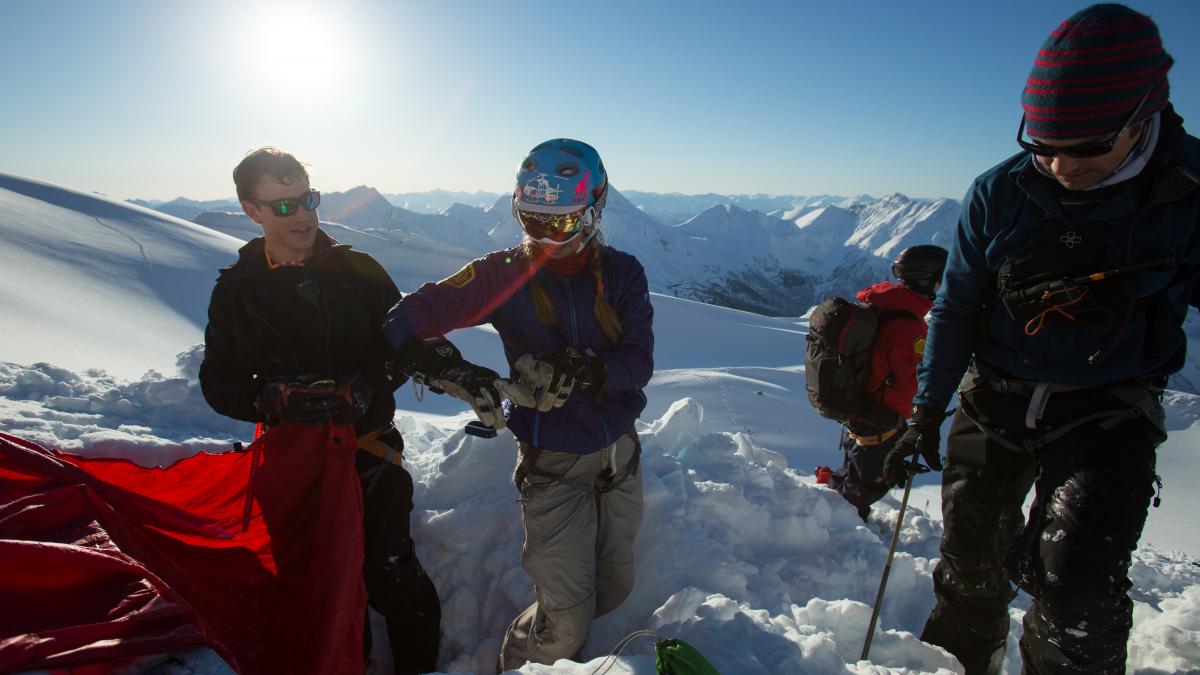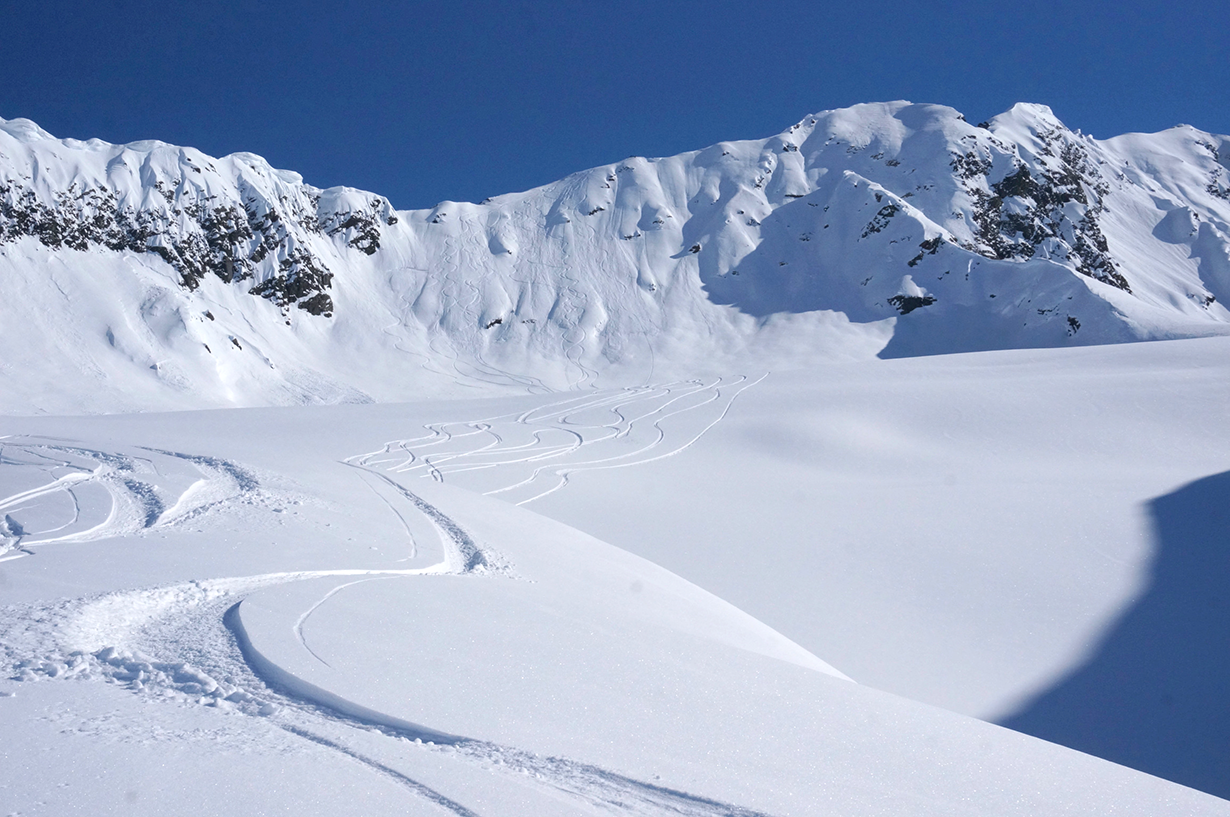Today we’re talking about backcountry travel and safety with Blister reviewer, Paul Forward. You can see Paul’s article below, and you will also find below the accompanying podcast we recorded to provide further detail on these critical topics.
On the podcast, we get started with an update on how I’m doing these days, having broken my neck this past July in a backcountry skiing accident that I was fortunate to survive, and that resulted in some permanent new hardware for me:

On the podcast and in his article, Paul offers his best advice about backcountry travel & wilderness medicine — info that is all relevant for skiers, snowboarders, hikers, mountain bikers, boaters — or in other words, YOU.
Paul talks about what you should know before heading into the backcountry, and we discuss what items you should be carrying with you when traveling in the backcountry and in wilderness areas.
Paul is a pretty good person to have talking about this topic. He lives in Alaska where he is a lead heli guide for Chugach Powder Guides. He’s also a family-medicine-boarded physician who works in rural Alaska — currently working in the Arctic village of Kotzebue, and he’s also worked in other parts of the state, including Kodiak, doing emergency & hospital medicine. He’s also a medical director for an Alaskan-based group of AMGA guides, and he is an Advanced Wilderness Life Support Instructor, and the only person offering these AWLS courses in Alaska. And beyond all that, Paul spends a lot of time in the backcountry, skiing, mountain biking, kayaking, pack rafting, and bow hunting.

And as we discuss at the end of our conversation, Paul is teaching an Advanced Wilderness Life Support course this February in Girdwood, Alaska, in conjunction with Chugach Powder Guides. So if you’re interested in taking an AWLS course and like the sound of doing it with Paul while also getting in some heli-skiing and gaining some familiarity with helis & heli evacuations, listen up.
TOPICS & TIMES
- Update on Jonathan’s status (3:24)
- What should people have, studied before venturing out into the backcountry? (8:56)
- Two-Way Radios (12:03)
- How to improve your radio signal in the backcountry (17:02)
- Minimizing interference with your beacon (17:44)
- DeLorme / Garmin In-Reach (21:58)
- Satellite Phones (26:29)
- First Aid Kit, and what Paul himself carries (28:37)
- How to evacuate someone / Creating a makeshift sled (39:24)
- Various Types of Wilderness Education Courses (46:06)
- The course Paul is teaching this coming February — AWLS + Heli-Skiing (51:38)
Backcountry Travel & Wilderness Medicine, by Paul Forward
Throughout much of the northern hemisphere, the snow is stacking up and a lot of folks are strapping on skins and heading into the backcountry for the first time this season.
As we wax our skis, check our bindings, and put batteries back in our beacons, we should also remember to review our beacon functions, do some search drills, and ideally even a little strategic shoveling practice.
Beyond that, it is also a very good idea to take a quick inventory of our first aid kits and give some thought to how we’ll deal with injuries in the backcountry.
In order to prime the pump a little on wilderness medicine, Jonathan Ellsworth and I recorded this podcast with some thoughts and ideas along these lines, and I’m going to touch on a few of those points below to help get us all thinking about how to handle injuries in the mountains — and ideally, how to prevent some of those injuries in the first place.
What We’ll Discuss:
- Communication Devices
- First Aid Kits
- Extraction Equipment and Emergency Shelters
- Education
Communication Devices
This is a topic I’m passionate about because I think it’s one of the most overlooked and important pieces of gear we can take with us into the backcountry. Being able to communicate effectively with our group — and also beyond our group — is not only convenient, but can and will save lives. We get into more detail in our podcast conversation, (and there is still a lot more we could say on this topic), but for now we’ll break down 4 categories of devices:
- cell phones
- two-way radios
- satellite messaging devices
- satellite phones
Cell Phones
Cell phones are great as long as they are kept relatively warm, are fully charged at the beginning of the day, and have good coverage from the tops of ridges to the creek bottoms below. Follow recommendations from beacon manufacturers re: the distance you should keep your beacon from your cell phone, but in general, you should (1) keep your phone and beacon as far apart as possible, and (2) keep your phone in airplane mode or turned off when not actively communicating or using its GPS.
Two-Way Radios
Two-way radios are another major topic, and are, thankfully, gaining in popularity.
I consider a two-way radio a standard part of my kit when going skiing each day, and usually have at least one extra in my kit to hand out a buddy at the parking lot if he or she doesn’t have one. These are obviously not going to be useful for calling rescue resources from far away, but I find them indispensable for everything from getting info on lines being skied to keeping track of the group in trees or low visibility.
There’s a huge range of options and costs, and some two-way radios require registration and licenses to use. I prefer models that have lapel microphones, and some have mics that also have controls on them so I can turn the radio on/off via the mic without taking it out of my pocket or pack.
Lately I’ve been using the Backcountry Access BC link radios, but I’ve also had good luck with much less expensive radios from Midland, Motorola, and a programmable Baofeng.
Tip: If you’re not getting a good signal, you should try removing the radio from your pocket and holding it over your head and as far away from your body as possible. You might be surprised at how much better the radio will work like that.
And as with cell phones, try to keep the radio as far from your beacon as you can.
Satellite Messaging Devices
These are awesome and relatively affordable (compared to sat phones). I prefer the DeLorme / Garmin inReach because it utilizes the Iridium network which works well even at extreme latitudes (like up in Alaska). We go into some further detail on this in the podcast, but I generally prefer the inReach to any of the Spot products.
Satellite Phones
Satellite phones are the ultimate backcountry communication device, but they tend to be heavy and are very expensive. (Still, in the immortal words of Ferris Bueller, “If you have the means, I highly recommend picking one up.”) But an inReach is what I carry for almost all of my recreational adventures, including at least a couple of solo multi-week wilderness trips each year.
First Aid Kits
This is another big topic that deserves a lot more coverage, but here, I want to highlight a few guidelines that I follow whether I’m putting together an ultralight kit for self-supported solo trips, or my professional kit for heli-ski guiding. We even apply some of these principles when putting together a kit for physicians to take with them on remote village trips in the Alaskan Arctic where I work much of the year.
It’s okay to leave behind stuff that you can improvise from your gear — items like splints or bandages — but a few band-aids and a little gauze and tape are light, compact, and convenient. Just make sure that they haven’t been sitting in a gooey puddle in the bottom of your pack for 3 seasons before you end up using them.
One of my main first-aid-kit principles is to consider bringing something if I think it could make a life-, limb-, or eye-saving difference.
Oral pharyngeal (OPA) and nasal pharyngeal (NPA) airways are simple plastic or rubber devices designed to protect someone’s airway when he or she is unable to do so. It’s also something I’ve thought about a lot and, at least for now, I carry a couple of them in different sizes in my kit, especially when I’m guiding. Any wilderness situation where an oral or nasal airway might be needed is obviously a dire one with a high likelihood of a bad outcome, but, especially in avalanche terrain, I think they are worth including in the kit if you have the training to properly apply one.

Medications are yet another huge topic, but we discuss some of them on the podcast. A few tabs of naproxen, ibuprofen, and/or acetaminophen are nice to have, especially on multi-day trips. I usually carry a couple of 81 mg aspirin as well, because they weigh almost nothing and I’d rather have them than not if I think someone is suffering from a heart attack or similar process.
Allergy/anaphylaxis meds are sometimes a good idea. A few diphenhydramine in the pack can be useful and are worth bringing. Epipens (or the much more economical syringe and ampoule option) should be carried in certain situations and by those who know that they need them.
Tip: Be aware of the manufacturer’s temperature ranges on Epipens. I know of at least one manufacturer who requires that devices be kept between 59-86 degrees Fahrenheit (15-30°C).
I also usually carry a couple of tabs of some kind of opiates in my kit. These obviously require a prescription and should be discussed with your medical provider before bringing them with you, but there are situations in which they can be used to make someone significantly more comfortable while being extracted or waiting for rescue.
Extraction Equipment and Emergency Shelters
There a bunch of products and skills that can be used to get injured people out of the wilderness or sheltered from the environment while awaiting rescue or extraction. I’m not going to dive into all of that here, but please at least consider what gear and skillsets you have in your group to accomplish this and consider doing a little practice. If you’ve never tried to move someone through the mountains in deep snow who can no longer walk or ski, you should definitely practice it. It’s way more difficult than you might imagine.

Education
A legitimate case can be made that people should not be traveling in avalanche terrain without both formal avalanche education and formal first aid training. And I agree with this stance.
In its most basic description, avalanche rescue includes the search, the shoveling, and the first aid involved in a rescue, and all three of these things require skill sets that need to be learned, practiced, and updated as new knowledge and technology comes along.

So if anyone reading this has not completed at least some basic wilderness first aid training, please consider doing so for the sake of your backcountry partners.
There is a lot of variation out there, but in many mountain areas, the first step in the process should be a Wilderness First Aid (WFA) course. It’s only a couple of days and will give you a basic skill set and understanding that could make a big difference.
For those seeking a more in-depth course or who are planning to work in the outdoor industry as a guide or instructor, consider taking the longer but much more comprehensive Wilderness First Responder (WFR) course, or Basic Wilderness Life Support (BWLS).
Those who already have significant medical training like physicians, PA’s, RN’s, nurse practitioners and paramedics should consider checking out an Advanced Wilderness Life Support (AWLS) course. These courses are usually 3-days long and dive deeper into the physiology and advanced care of sick or injured people in remote or austere environments.
Check out www.awls.org for a list of courses, and check out the one I’m teaching in Girdwood, Alaska this coming February that also includes some heli-skiing with Chugach Powder Guides.
Thank you for reading all of that! Now get out there and do some beacon practice, dig some snow pits, refresh your first aid kit and skills, and have a wonderful winter!
[powerpress_subscribe]

Was a super good episode!
Awesome episode, may try to catch up with Paul next season if he’s still running that CME. I would have liked to heard a bit more (maybe another episode) about avie gear. Favorite beacon, shovels, probes,, or selfishly airbags as I am in the market for a one and sounds like Paul has some private and professional experience with these.
Any plans for another one of these safety oriented podcasts? I have helped in more rescues in recent years than ever. Thanks for your dedication and work. Play free, kind, and safe this winter :)